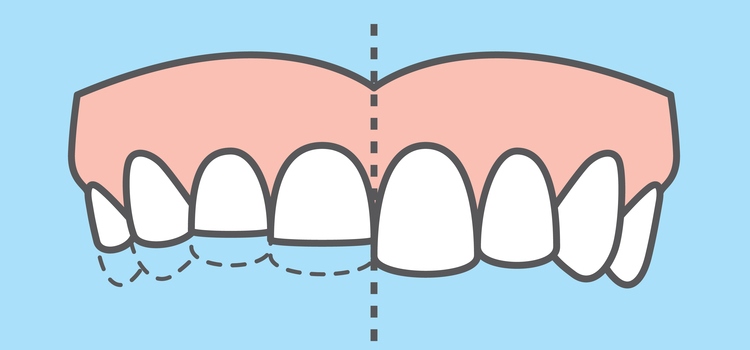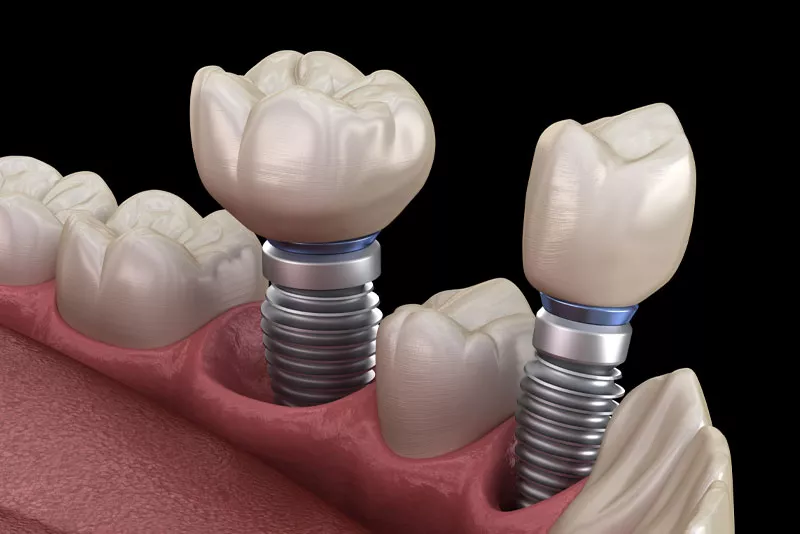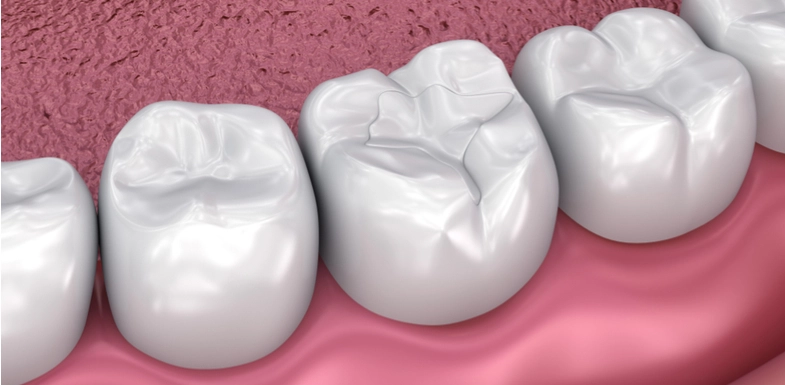
Have you ever noticed deep grooves in your teeth and been curious what they are and why do our teeth have it?
These deep grooves, better known as fissures, are a natural part of the anatomy of the teeth and are usually found on the chewing surfaces of our molars and premolars. They are believed to have been evolved in early humans to help with the chewing of tough plants and raw meat. The grooves work by providing increased surface area and the necessary traction to break down of food into smaller pieces for easier digestion.
Will the Grooves Get Deeper?
The answer is yes. There are a multitude of factors that causes the fissures on your teeth to get deeper, and one must understand what are the factors in order to prevent it. Here are some of the factors that contribute to the deepening of the grooves:
- Acid reflux or diet high in acidic food. When stomach acid flows back into the esophagus and to the mouth, the strong acid can cause the tooth enamel to soften and breakdown, leading to a deeper indentation of the teeth surfaces. This process is known as acid erosion and can lead to a host of other dental problems such as increased sensitivities, cavities, and a change in the shape and appearance of the teeth.
- Build up of plaque on the grooves. Plaque consist of millions of bacteria that stick to the surface of the teeth and gum. These bacteria produce an acid that weakens the tooth enamel, causing the grooves to deepen.
- Uneven biting force or forceful brushing. Strong and prolonged pressure exerted on the surface of the teeth can cause the grooves to deepen. This is often seen in patients who suffer from bruxism, a condition where one unconsciously grinds and clenches their teeth even while they are sleeping.
As seen, there are numerous reasons that may cause the grooves to deepen. It is important to monitor the health conditions of the teeth to ensure that the grooves do not contribute to any dental problems.
Are Deep Grooves in Teeth Bad?
Grooves on the teeth are inherently good for humans as the uneven surfaces allow us to tear through tough plants and meat. However, these deep grooves can be difficult to clean properly with a toothbrush. If not clean regularly, food and bacteria can be trapped, causing plaque, a sticky film of bacteria, to accumulate deep in the grooves.
When not cleaned, plaque produces an acid that damages the tooth enamel and causes cavity. This is why tooth decay always happen on the top of the teeth where the grooves are located.
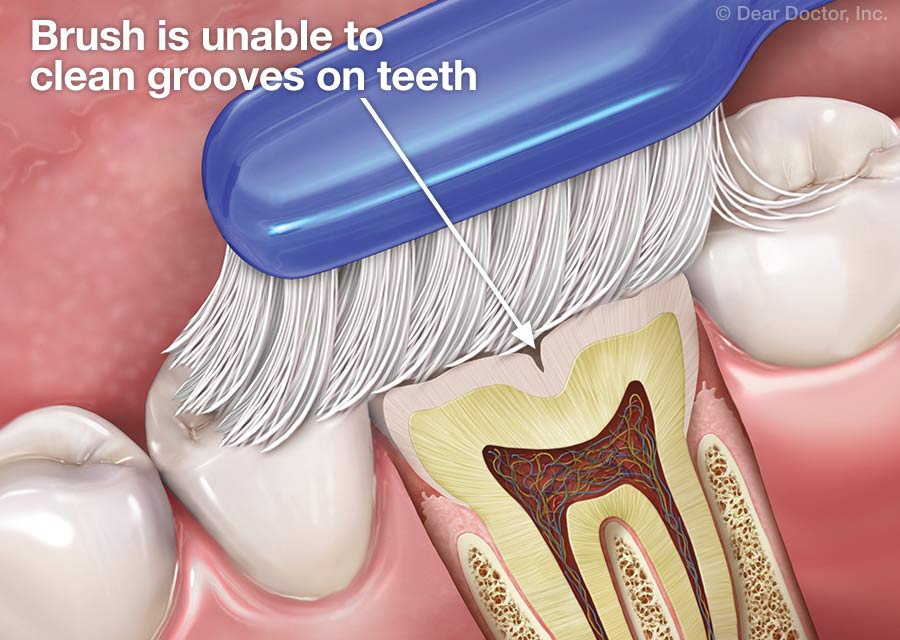
Deep grooves in the teeth are not bad if they are properly cleaned. As such, one must maintain proper oral health to prevent the buildup of plaque and stop the grooves from deepening.
How to Clean Deep Grooves in Teeth?
Proper cleaning of the grooves is essential to maintaining the overall health of your teeth and preventing them from deepening. To keep these areas clean and free of plaque, adhere to the following oral hygiene habits:
- Brush at least twice a day, two minutes each. It is recommended to use a soft-bristled brush to avoid irritation of the gums and damage to the teeth. Pay close attention to the molars and premolars as that is where the deep grooves are located.
- Use a water flosser. A water flosser or irrigator uses a jet of water to blast plaque and food particles out of the deep grooves in your teeth.
- Rinse your mouth with a mouthwash. Mouthwash contains several active ingredients that help to kill bacteria and loosen plaque in the deep grooves of your teeth
- Do a professional cleaning every six months. Your dentist can use special tools to remove the buildup of plaque in the grooves of the teeth. A professional assessment of your oral health condition also helps you identify areas of improvement and understand how you can improve your oral hygiene.
It is important to clean the deep grooves in your teeth regularly to prevent the buildup of plaque an the development of tooth decay and gum disease.
Managing the Deep Grooves
During your oral health checkup, your dentist may have assessed and determined that the grooves on your teeth are too deep. In this situation, a dental sealant may be applied on the grooves to reduce the depth of it. The sealant is a clear or white material that is coated on the surface of the teeth, forming a protective shield that fills up the groove and prevents plaque from accumulating.
This procedure is commonly conducted on who suffer from bruxism and have deep grooves on their molars and premolars. It is also done on children between the age of six and twelve where they are at higher risk of developing cavities due to poor oral hygiene. In fact, a study have shown that 84% of all oral health problems in children are due to cavities that occur in the grooves of the teeth.
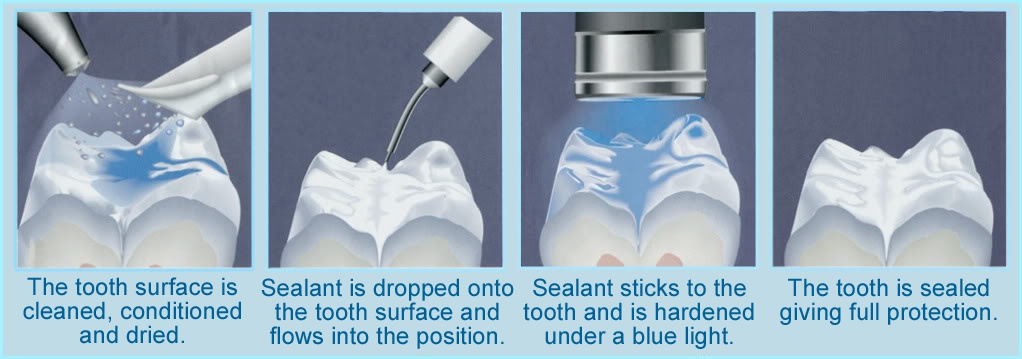
The steps for the application of dental sealant are as follows:
- An initial oral health assessment is conducted to determine if the grooves are deep and are causing dental issues such as plaque buildup or cavities.
- Any plaque or tatar is first removed from the grooves of the teeth. The area is dried to allow for application of sealant.
- Dental sealant is applied on the teeth surface where the deep grooves are located.
- A blue light is shone on the sealant, accelerating the hardening of the sealant and allowing it to stick to the teeth.
- A check is done to ensure that the sealant is not affecting the bite. Any excess sealant is polished away.
If properly maintained, sealants can last for up to eight years. When the sealant have worn off and are no longer providing any protection to the teeth, it can be easily replaced with a new seat of sealant. This is done by first removing the existing sealant and applying a new set of it on the grooves.
It is important to note that dental sealant only work to cover the surface of the tooth and to prevent cavities. In the event where there is significant decay and the cavity have reached the dentin, a filling or crown is used instead to repair the damage.




